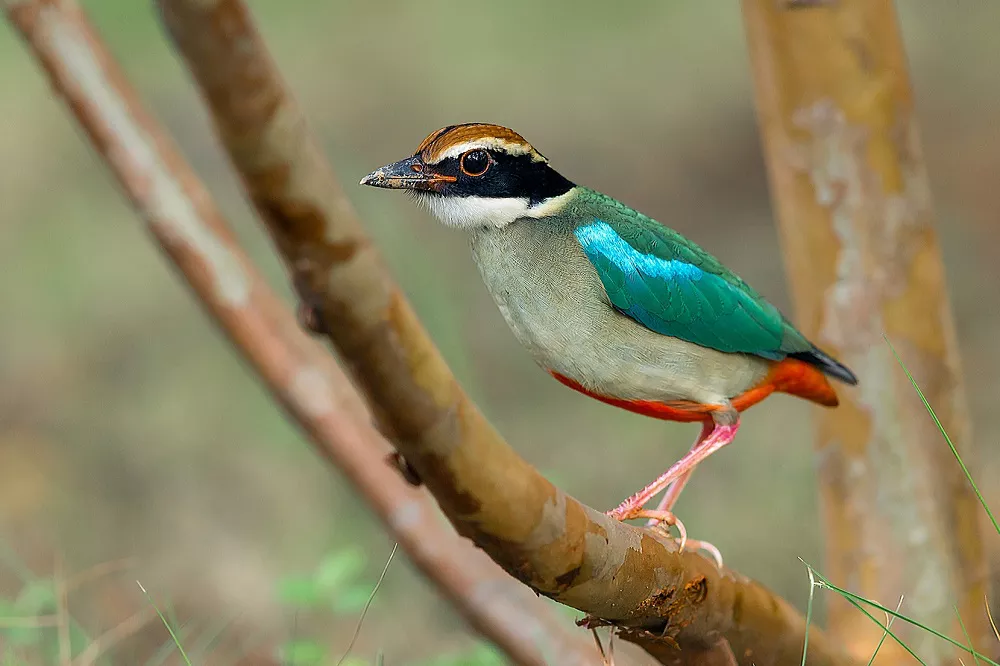The Fairy Pitta (Pitta nympha) is a captivating avian species known for its exquisite plumage and charismatic presence. Endemic to East Asia, this small passerine bird belongs to the family Pittidae. In this article, we delve into the enchanting physical features that define the Fairy Pitta, shedding light on its remarkable appearance.
Size and Shape:
The Fairy Pitta measures approximately 15-17 centimeters in length, making it a relatively small bird. It possesses a robust build with a short, rounded tail and a slightly curved bill. The bird’s body shape is characterized by a plump, compact silhouette.
Coloration:
The Fairy Pitta showcases an impressive array of colors, making it a visual delight for bird enthusiasts and nature lovers alike. The overall color scheme of its plumage can be described as a combination of rich blues, greens, and warm chestnut tones.
Head and Upperparts:
The head of the Fairy Pitta is adorned with a striking combination of deep blue and black feathers, which extend from the crown to the nape. This dark coloration contrasts vividly against its prominent white supercilium, which stretches from the base of the bill to the sides of the head. The upperparts of the bird, including the back, wings, and tail, exhibit a beautiful mix of emerald green and turquoise blue feathers.
Underparts:
The underparts of the Fairy Pitta are adorned with an array of warm colors. The throat and breast display a deep chestnut hue, which gradually transitions to a paler shade towards the belly and undertail coverts. The abdomen is predominantly pale yellow, providing a delightful contrast against the bird’s darker upperparts.
Wings and Tail:
The Fairy Pitta’s wings are relatively short and rounded, showcasing a combination of turquoise, green, and black feathers. When in flight, a distinctive pattern of black and white bars becomes apparent, adding an extra touch of elegance. The tail, though short, is noteworthy for its black coloration with a bold, bright blue central tail feather, which adds a vibrant pop of color.
Sexual Dimorphism:
Male and female Fairy Pittas share a similar appearance, making it challenging to distinguish between the sexes based on physical characteristics alone. However, during courtship and breeding displays, males may exhibit more vibrant and pronounced colors, emphasizing their presence to potential mates.
Juvenile Plumage:
Juvenile Fairy Pittas possess a less vibrant coloration compared to adults. They exhibit a duller version of the adult plumage, with less distinct and muted hues. As they mature, their plumage gradually transitions to the vibrant and captivating colors that define the species.
Conclusion:
The Fairy Pitta is a visual marvel, adorned with a splendid combination of blues, greens, and chestnut tones. Its striking coloration, including the vibrant blue central tail feather and contrasting white supercilium, sets it apart from other avian species. The Fairy Pitta’s physical beauty captivates both casual observers and dedicated bird enthusiasts, further emphasizing the importance of conserving and appreciating the wonders of our natural world.
Related topics:


 Facebook
Facebook  Instagram
Instagram  Youtube
Youtube 